How Manny from Diary of a Wimpy Kid galvanized political activism on TikTok
Manny Heffley became a political symbol for young TikTok users to support Black Lives Matter protests around police brutality.
How Manny from Diary of a Wimpy Kid galvanized political activism on TikTok
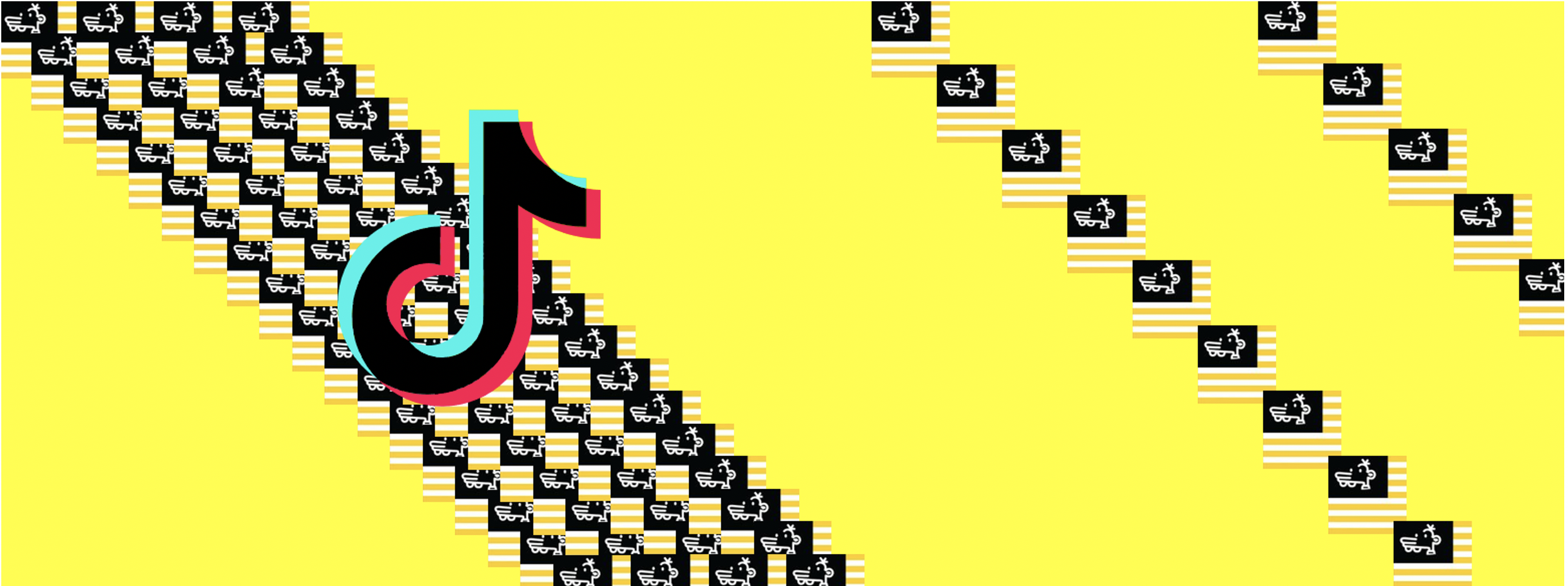
Source: @AlyssaKann/DFRLab via Wikimedia
As protests against police brutality continued across the United States, a minor character in a graphic novel series for teens became a meme against police brutality on TikTok. Amid the possibility that TikTok could be banned in the United States, the meme’s popularity is representative of broader political activism efforts on TikTok that such a ban could curtail.
The meme, depicting Manny Heffley — a stick-figure character from Jeff Kinney’s Diary of a Wimpy Kid series — with the acronym “ACAB” (“all cops are bastards”) has become an enduring symbol for a wide array of digital activism efforts occurring on TikTok in support of Black Lives Matter and against U.S. President Donald Trump. After TikTok users garnered widespread media coverage trolling the Trump campaign’s June 2020 Tulsa rally, users came up with a slew of similar digital protest actions to engage in, from filling up online shopping carts with Trump merchandise in an attempt to harm the online store to messing up Trump campaign survey data. The Manny meme evolved quickly on the platform, spurring racial justice petition-signing as well as satirical pursuits like redesigning the U.S. flag to depict Manny.
While TikTok is perhaps best known among U.S. consumers for popular dancing videos, the platform’s rising popularity among young people means content evolves quickly. As New York Times technology reporter Taylor Lorenz put it, “the app has become an information and organizing hub for Gen Z activists and politically-minded young people.” The versatility of the short-video format — where users’ memes can riff on combinations of visuals, audios, and text that become increasingly referential as a meme evolves — combined with the political activism present on much of TikTok allowed the Manny symbol to unfold in tandem with political events.
President Trump’s August 2020 executive orders against TikTok could result in the platform being banned in the United States if it is not acquired by a U.S. company. The Electronic Frontier Foundation described a possible TikTok ban as violating the First Amendment, since TikTok is “a popular means of communication and expression,” while supporters of Trump’s proposal point to broader national security concerns related to TikTok’s ownership and design. Manny’s symbolic popularity, however, shows how young Americans’ use of TikTok for digital activism in novel ways may soon be eliminated. The complicated evolution of the Manny meme from joke to genuine rallying symbol reveals how some young people are discussing political action, engaging in protest, and organizing their ranks for the presidential election.
The spread of Manny on TikTok
Manny seems to have first migrated to TikTok in early May 2020. By June, the symbol had been explicitly connected on TikTok to police brutality and protest through a video called “THE MANNY WILL NOT BE TELEVISED.” In this video, a voice can be heard saying,
The Manny will not be televised… Look how pissed off the Manny is — look how mad he is. He’s tired of police brutality, he’s tired of this fucked-up situation, he’s tired of American imperialism… Fuck that man, he’s tired of curfews too… Molotovs man, burn the racists down.
Over 6,000 videos have since used the audio from the video, whose title is a reference to the famous Black Power slogan popularized by Gil Scott-Heron’s song and poem “The Revolution Will Not Be Televised.”
“THE MANNY WILL NOT BE TELEVISED” became one of several popular hashtags and phrases used in conjunction with the Manny symbol. At the time of publication, Manny-specific hashtags such as #TheManny, #MannyHeffley, #TheMannyWillNotBeTelevised, #TMWNBT, #MannySaysDefundThePolice, and #MannyFlag have been viewed upwards of 100.9 million times on TikTok.
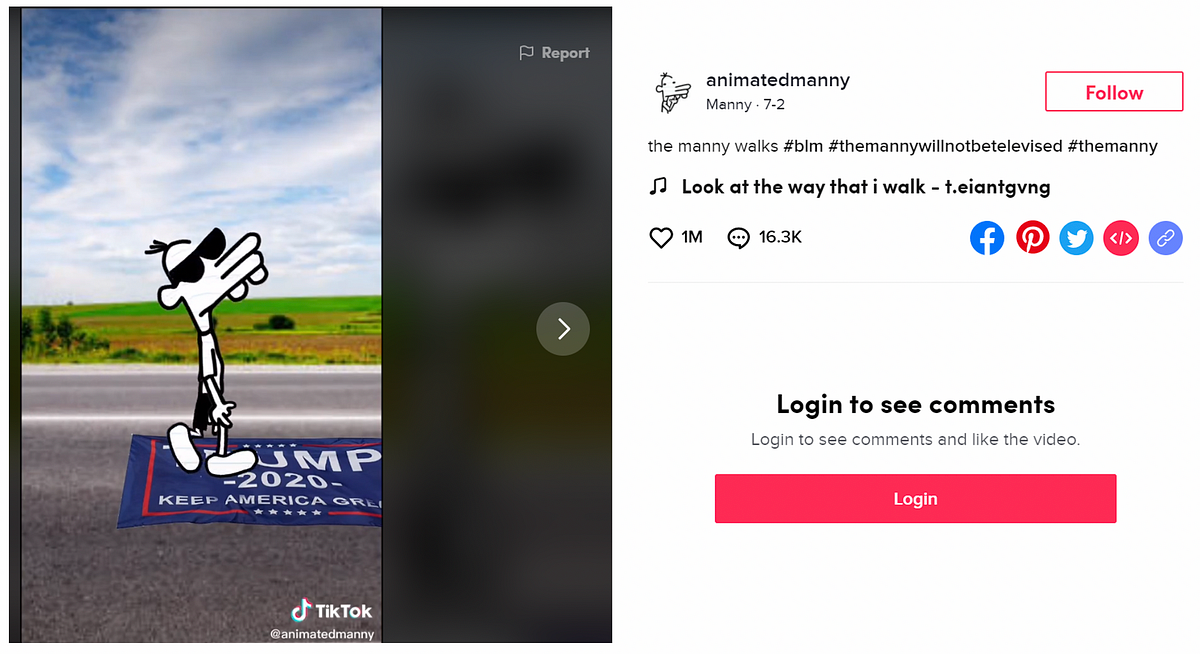
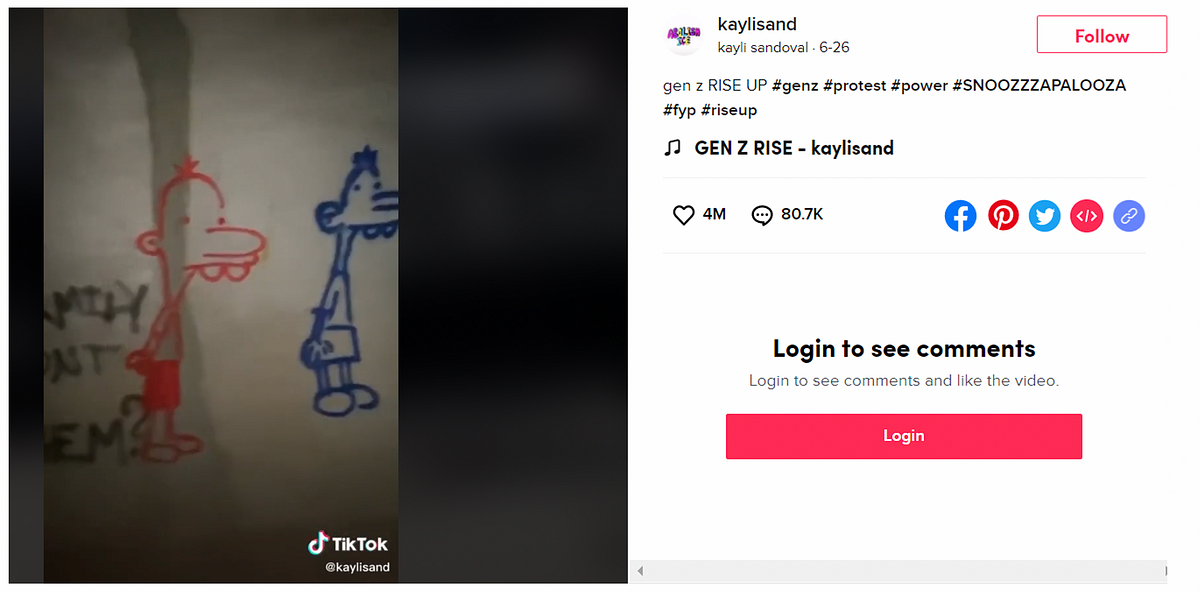
Users made videos telling viewers to sign a petition every time they see a Manny icon, which numerous commenters stated they complied with every time they saw a Manny in a video. Others used the symbol to mobilize people to rally against police brutality, advocate for defunding the police, and crowdsource donations. The symbol also proliferated in sometimes surprising ways, with TikTok videos displaying Manny-related memes in the form of cakes, hand-embroidered t-shirts, Manny tattoos, and earrings being sold with proceeds donated to Black Lives Matter legal defense funds.
The meme evolved further after a TikTok influencer created a petition to change the U.S. flag to a black-and-yellow version showing Manny, which led to TikTok videos of people wearing black and yellow on July 4 in honor of the proposed flag and playing a “new national anthem,” the Wiz Khalifa song “Black and Yellow.”
Another way users participated was by changing their profile picture to that of Manny or the Manny flag. In a sample dataset of 159 accounts that had used at least one Manny-associated hashtag, 8 percent of the profile pictures were of Manny or the Manny flag, while an additional 14 percent of the pictures were in support of BLM.
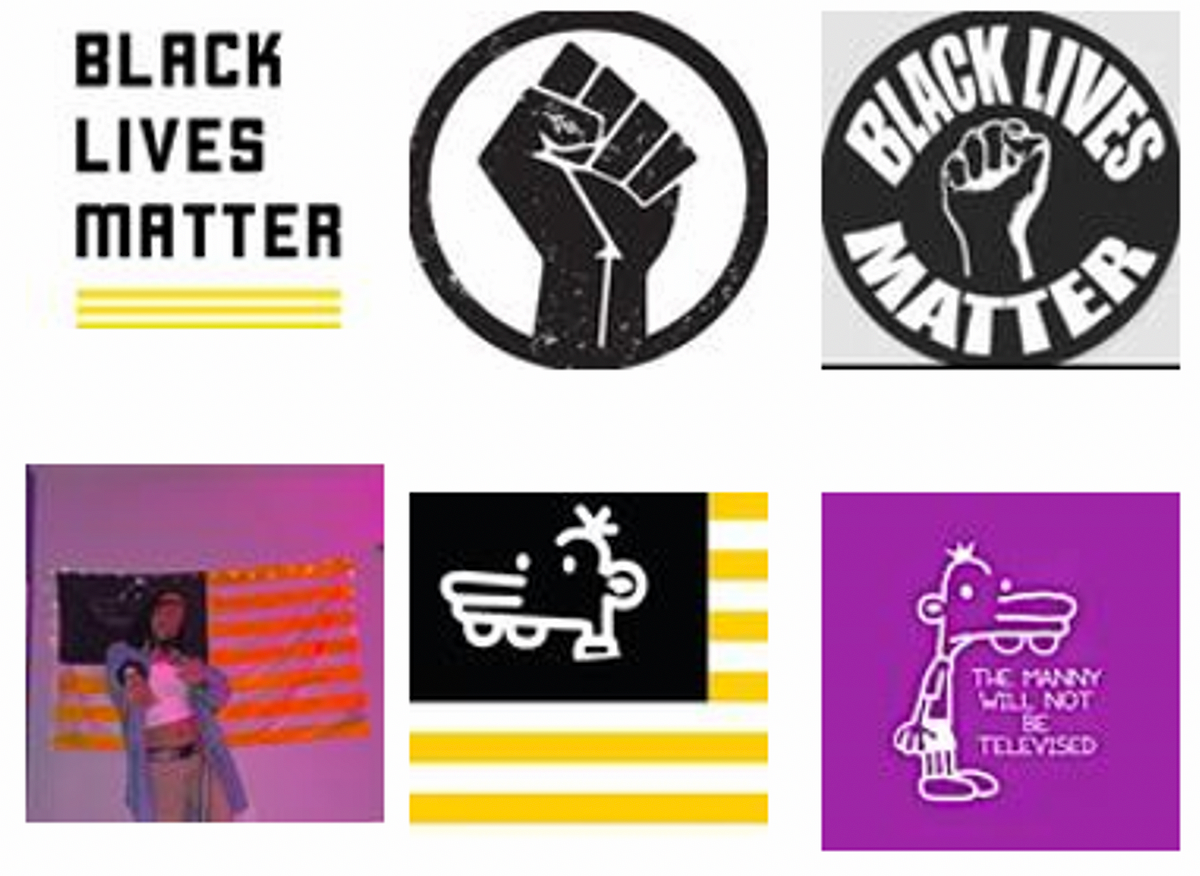
Some people — including the creator of the Manny Heffley character, author Jeff Kinney — have criticized the meme as trivializing racial justice movements fighting racism and police brutality. Kinney deleted his first tweet addressing the meme, although his second tweet on the topic remains online. In the deleted tweet, he stated, “I don’t like it. The Black Lives Matter movement needs to be taken seriously. This isn’t helping.” Kinney added in the second tweet that “assigning a cartoon character to [the BLM movement] trivializes it.”
In an August 31 interview with the DFRLab, Kinney echoed these sentiments, saying that he had taken down the tweet only because it was starting to attract trolls. “I know that memes are a very effective tool for communication, but I can’t stand the trivialization of the Black Lives Matter movement,” he said. He called the Manny flag a “more positive incarnation” of the character, but said that he “didn’t like that initial use of the character [with the ACAB acronym]… I think it hurts the Black Lives Matter movement.”
Some TikTok users further politicized the symbol after criticism in late June 2020. For instance, @themannyspotted, one of the many Manny-specific TikTok accounts, published “The Manny-festo” on June 28 in response to the criticism, with the narrator stating. “‘The Manny’ isn’t its own movement, but rather a symbol of unity used by people who are for the greater movement. We hope to contribute to, and not distract from, what’s going on… We strive to provide smiles, information, and resources that aid the people fighting for change.”

Other users defended the symbol by stating that it is a way to engage users who otherwise would not be active on these issues, and serves a symbol of Generation Z’s power to organize. As Kristin Merrilees referenced in a June 23 post to Medium, the Manny symbol is evocative of “Kilroy was here,” the symbol graffitied by U.S. soldiers during World War II; indeed, many TikTok videos specifically depicted Manny graffiti.
By late June, the Manny meme seemed to have reached its peak, both on TikTok and off. A query on Google Trends indicated that June 26 and June 27 had the highest searches of “the Manny” and “the Manny will not be televised” in the United States.
The Manny’s amplification across the internet
In addition to its spread on TikTok, Manny spread elsewhere on the internet. For instance, the satirical Manny petition that advocated changing the U.S. flag and national anthem to reference Manny was signed by 1.2 million people.
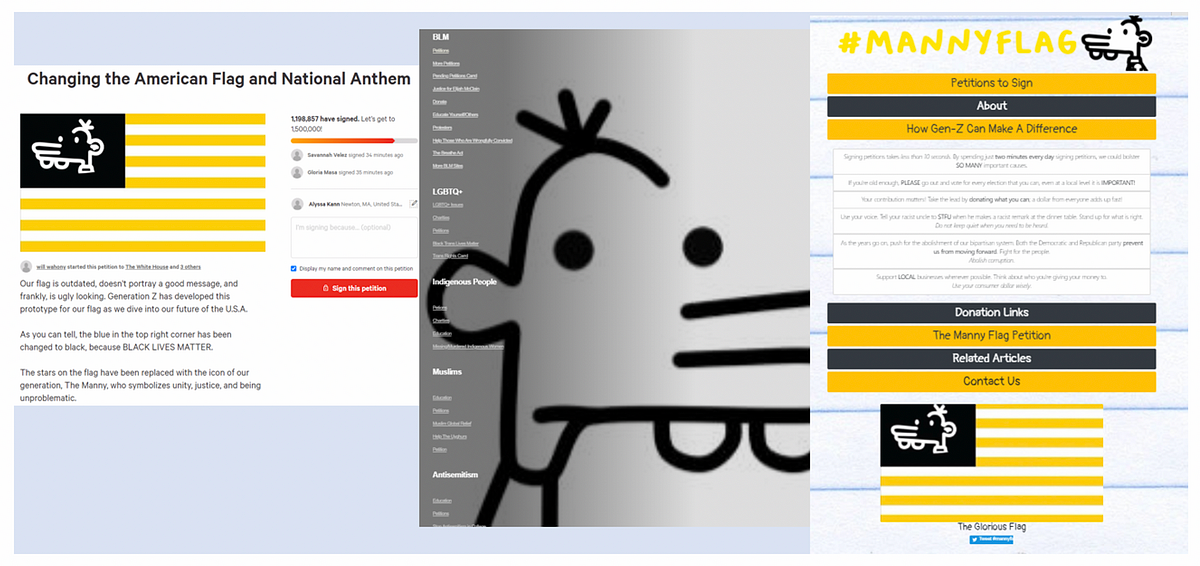
Although the petition was a joke, the creator of the petition, TikTok influencer Will Wahony updated it to include a genuine petition that proposed a law to penalize police officers for shooting unarmed citizens, and ended the petition’s description with a mobilizing credo:
Generation Z is the future. We can do something great. Look at how easy it is to come together with our knowledge about social media. We just need to be coming together for the right things. Let’s change the world, one Manny at a time.
On June 27, Wahony also created a website for the Manny flag, mannyflag.org, with genuine petitions to sign, causes to donate to, and a call for Generation Z to become more civically active.
Manny’s influence was not limited to Wahony’s involvement, although his 1.5 million followers likely helped the meme’s social justice message grow. In line with the idea that users must sign a petition every time they see the Manny, some accounts on TikTok linked a Manny-themed social justice card in their profile bios to facilitate the process, which contained links not only to BLM petitions but also to petitions for a range of topics including advocating for indigenous, LGBTQ+, and encryption rights; providing aid to Yemen; abolishing the U.S. Immigration and Customs Enforcement (ICE) agency; and helping Palestine. The card also contained information on how to vote, although some users that shared the card acknowledged they had yet to reach voting age. In total, the card included 58 unique petition, donation, resource, and education links spanning 15 social justice topics.
The Manny meme also spread across social media. On Twitter, there were 1,680 mentions of #themannywillnotbetelevised or #themanny from May 15 to August 15, 2020, spiking on June 26 with 620 mentions, according to a query using the Meltwater Explore social media monitoring tool. New Instagram and Twitter accounts devoted to Manny Heffley and his family were created to disseminate BLM and anti-police content, and YouTube videos of animated Manny TikToks and the new national anthem were posted. Manny-related merchandise was even sold on Redbubble and Amazon. While the Manny meme did not receive much mainstream news coverage, Global Times, a Chinese-state associated outlet, wrote an article about the Manny flag petition, and two Kremlin-linked outlets posted about it on social media. Some accounts attempted to trick Fox News into writing about Manny when they apparently sent the news organization tips, but, as of publication, there have not been any Fox News articles about the Manny.
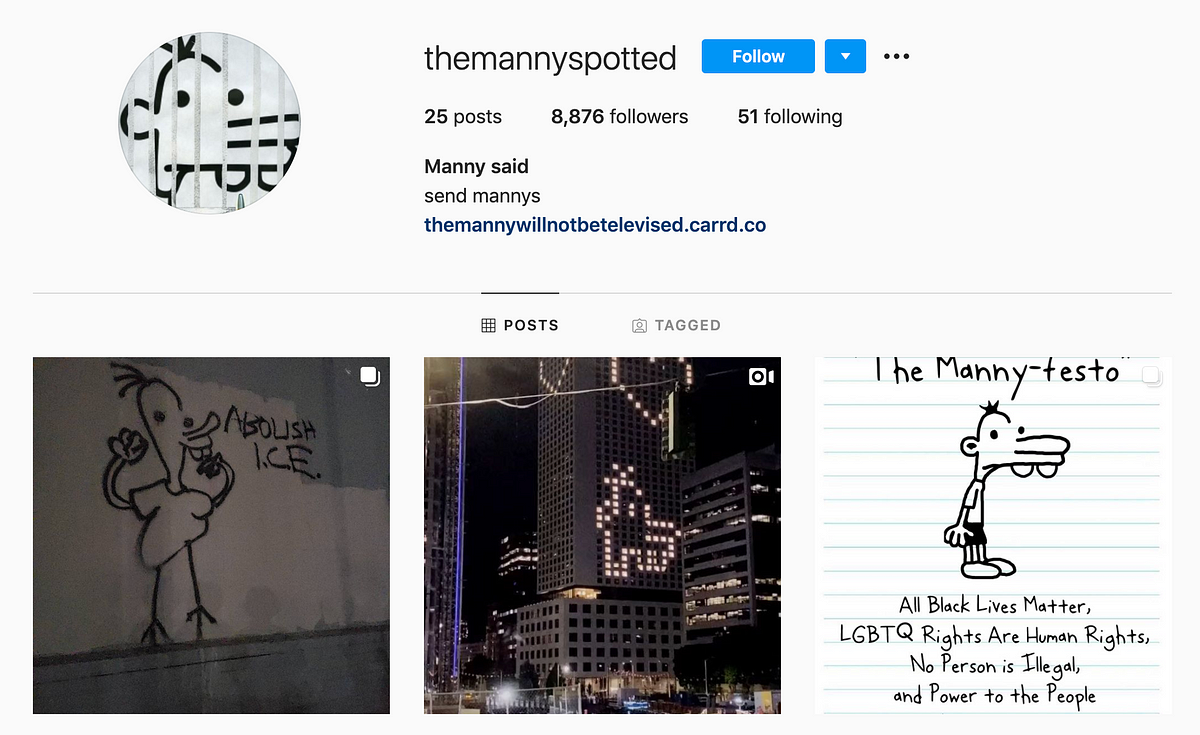
The digital prowess of many Gen Z — who created social media accounts, websites, petitions, Urban Dictionary entries, and more for Manny — likely contributed to the symbol’s staying-power online and helped portray Manny not just as a meme but as a symbol of a broader movement. While Kinney says he saw many talented people on TikTok pushing the Manny meme, he still worried it was undermining Black Lives Matter as a movement. “I would really encourage those people to use their talents in a really meaningful way, especially in this moment,” he told the DFRLab. “Because they can work against the thing they’re trying to promote by being unserious.”
Online, the line between humor and serious matters is blurred; the successful mobilization around Manny lies in its ability to straddle the two — engaging otherwise apathetic individuals to act politically through comedy, and mobilizing individuals who are already politically active with levity. And amid the possibility President Trump could succeed in banning TikTok in the United States, some accounts have even incorporated the Manny into their discussion of the ban.
Alyssa Kann is a Research Assistant with the Digital Forensic Research Lab.
Max Rizzuto is a Research Assistant with the Digital Forensic Research Lab.
Follow along on Twitter for more in-depth analysis from our #DigitalSherlocks.

